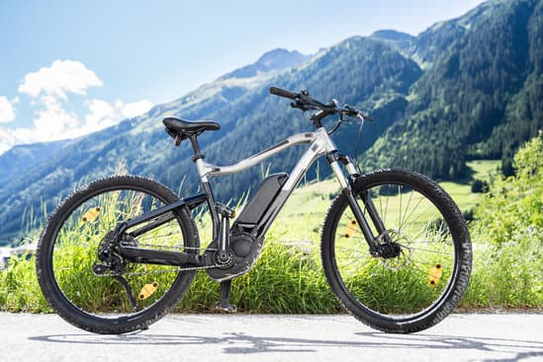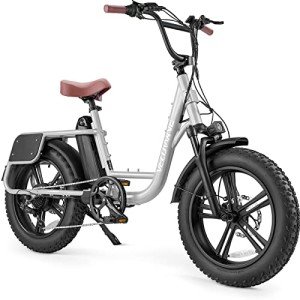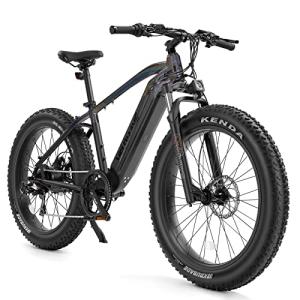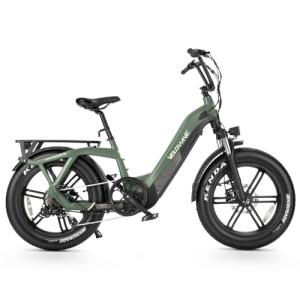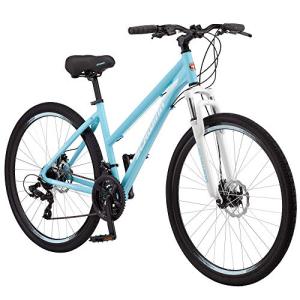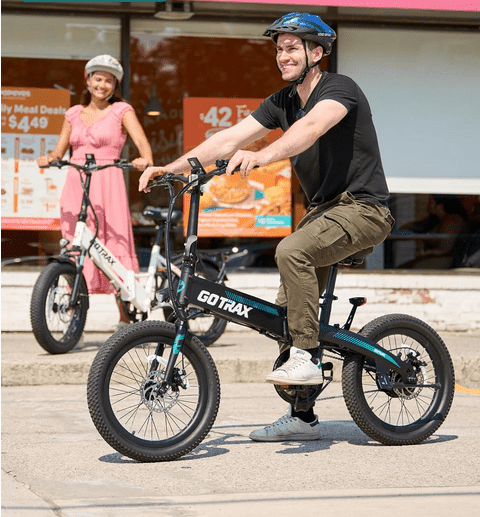How to Choose the Perfect Electric Bike for Your Needs: A Practical Guide
Choosing the perfect electric bike depends mainly on understanding how you plan to use it. Whether for commuting, running errands, or exploring trails, different e-bikes serve different purposes. The best electric bike for someone is the one that matches their specific riding style, terrain, and desired features.

Key factors include the type of motor, battery life, and how much assistance the bike offers. Some bikes are built for speed, while others focus on cargo or easy city riding. Paying attention to fit and comfort is also crucial for a good bike experience.
Learning about e-bike class, motor placement, and battery range helps buyers make an informed choice. Knowing the basics clears the way to pick a bike that feels right and meets practical needs.
Key Takeaways
- Identifying your main use helps narrow down the right e-bike type.
- Motor power, battery capacity, and assist levels affect performance and range.
- Proper bike fit and key features improve comfort and riding safety.
Define Your Riding Needs and Usage
Choosing the right electric bike starts with a clear understanding of how and where it will be used. This involves knowing what kind of riding someone does most often, their physical condition, and their practical needs for storage or transport.
Identify Primary Use Cases
He or she should first define the main reasons for riding. Is it for daily commuting, weekend mountain trails, or running errands? Commuter e-bikes often prioritize comfort, battery range, and lights for visibility. Mountain e-bikes focus on suspension and power for rough terrain. Cargo e-bikes are built to carry heavy loads like groceries or kids, so frame strength and extra racks matter. Urban riders might want a step-through frame for easy mounting, while those with limited storage should consider folding e-bikes. Being specific about the riding purpose narrows down the types and features needed to make the best choice.
Assess Rider Profile and Fitness
The rider’s age, fitness level, and strength determine which electric bike suits them best. Mid-drive motors provide strong torque, which helps on hills and when carrying loads, making them a better choice for those who need extra power. Hub motors tend to be simpler and lighter, suitable for flat city routes or leisure rides. The weight of the e-bike matters, especially if they need to carry it upstairs or lift it onto public transit. Fitness goals also matter; some riders prefer strong pedal-assist modes for a workout, while others rely more on motor power.
Consider Storage and Transport
Space at home or work is a key factor. Folding e-bikes are ideal if storage is tight or if the rider needs to bring the bike inside frequently. Some models fold compactly and fit in apartments or car trunks. For those who drive part of their commute, knowing if the bike can be carried easily or mounted on a rack is important. Step-through frames make handling easier, especially when loading or unloading. Riders should also check local bike shops to see options for test rides and maintenance, which affect long-term convenience and support.
Compare Electric Bike Types by Purpose

Different electric bikes serve different needs. Some are built for daily city travel, while others handle rugged trails or heavy loads. Choosing the right type depends on where and how a person rides most often.
Commuter Electric Bikes
Commuter e-bikes focus on efficiency and comfort for everyday city travel. They often have thinner tires for less rolling resistance and are lighter than heavy-duty models. Features like integrated lighting, racks, and fenders make them practical for carrying gear and riding in various weather.
These bikes usually have a moderate motor power capped at 20 mph for safe urban use. Battery size balances enough range for daily trips, often around 20 to 50 miles. Commuter e-bikes aim to reduce sweat and effort while making rides faster and easier, perfect for people who want to avoid traffic or parking hassles.
Mountain and Off-Road E-Bikes
Mountain e-bikes are built for rough terrain and steep climbs. They typically have fat tires for better grip and a suspension system that absorbs bumps, roots, and rocky trails. The motors provide strong torque to assist on hills and carry heavier loads.
These bikes often use mid-drive motors for balanced weight distribution and natural pedal feel. Riders should look for models with durable frames and hydraulic brakes, which offer extra control on descents. Mountain e-bikes come in hardtail and full-suspension versions. Hardtails are lighter and better for cross-country, while full-suspension models excel on technical trails.
Cargo and Utility Models
Cargo e-bikes are designed to haul heavy loads, such as groceries, children, or work equipment. They feature sturdy frames and large racks or platforms to carry bulky items safely. Some have extra-long wheelbases or dual batteries to extend range and stability.
These bikes typically have powerful motors and fat tires to handle extra weight and varied surfaces like pavement or gravel. Cargo e-bikes prioritize strength and load capacity over speed, often topping out at 20 mph. They're ideal for families, delivery riders, or anyone needing a practical transport solution without a car.
Folding and Portable E-Bikes
Folding e-bikes focus on compactness and convenience. They have smaller wheels, often 16 to 20 inches, and frames that fold into a portable size. This makes them easy to carry on public transit, store in tight spaces, or bring indoors.
Portability means these bikes generally have lighter motors and smaller batteries, limiting their range to short to medium rides. However, they maintain pedal-assist and throttle options for flexibility. Folding e-bikes suit commuters with mixed transport routes or apartment dwellers needing space-saving solutions. The tradeoff is less power and speed compared to full-sized models.
Key Features: Motors, Battery, and Power

Choosing the right electric bike means understanding how its power system works. The motor type and strength, battery capacity, and pedal-assist technology all affect performance. These details help match the bike to the rider’s needs and terrain.
Motor Type and Power
E-bikes use mainly two motor types: hub motors and mid-drive motors. Hub motors are mounted in the wheel, typically the rear wheel, and deliver smooth power on flat surfaces. They are simpler and often found on commuter bikes.
Mid-drive motors attach near the pedals. They work with the bike’s gears, making them better for hills and rough terrain. They provide more torque and efficient power use, though usually at a higher price.
Motor power ranges from about 250 watts to 1,000 watts or more. Higher wattage means stronger assistance and better hill climbing. For city rides, 500-750 watts often suffice. Riders tackling steep hills or carrying cargo may prefer 750 watts and above.
Battery Life and Capacity
Battery life matters most for how far a rider can go. Capacity is measured in watt-hours (Wh). A higher Wh means longer range. For example:
| Battery Size | Expected Range |
|---|---|
| 360 Wh | 25-35 miles |
| 672 Wh | 40-55 miles |
| 910 Wh | 60-75 miles |
Voltage and amp-hours combine to give watt-hours. Typical batteries range from 36V to 52V, with capacities from 10Ah to 20Ah or more.
Weight and size also play a role. Larger batteries last longer but add weight, which can reduce handling ease. Integrated batteries offer a sleek look, but external packs are easier to replace or upgrade.
Pedal Assist and Sensors
Pedal-assist systems help riders by amplifying their pedaling effort with electric power. Sensors detect pedaling speed and force to smoothly adjust motor output.
There are two common sensor types:
- Cadence sensors measure pedal rotation and provide fixed assistance levels.
- Torque sensors measure how hard the rider pedals, offering more natural, variable support.
Torque sensor systems typically feel smoother and work better on hills.
Pedal assist usually has multiple levels to choose from, letting riders control battery use and power. Having a responsive system helps maintain speed without draining battery too fast.
Safety, Comfort, and Essential Components
Choosing an electric bike means prioritizing features that enhance control, visibility, and ride comfort. Key components like brakes, tires, lights, and frame design play a crucial role in how safe and comfortable the bike will be for daily use. Attention to these details ensures a better riding experience.
Brakes and Stopping Power
Reliable brakes are essential for safety. Most electric bikes come with disc brakes, which work well in wet and dry conditions. Among these, hydraulic disc brakes offer the best stopping power and smoother control. They require less hand force and provide consistent performance, which is especially important on slopes or in traffic.
Mechanical disc brakes are more common on budget models. They still perform well but need frequent adjustments to work properly. Riders should test the brakes before buying to confirm quick, responsive stopping.
Strong brakes reduce the risk of accidents, making them a key factor when selecting an e-bike.
Tires and Suspension
Tires affect both safety and comfort. Look for puncture-resistant tires to help avoid flats, especially if riding on city streets or rough surfaces. Tires with reflective sidewalls add visibility from the sides in low light.
Suspension improves ride quality by absorbing bumps. A suspension fork in the front softens impacts from uneven roads or trails, reducing rider fatigue. Some models include rear or full suspension for more comfort, but front suspension alone is sufficient for most urban riding.
Together, durable tires and suspension systems help riders maintain control and stay comfortable over different terrains.
Integrated Lights and Visibility
Integrated lighting is vital for safety, mainly when riding at night or in low-visibility areas. Bikes with built-in front and rear lights draw power from the main battery, offering consistent illumination without extra batteries.
Some e-bikes also include brake lights and turn signals. These features make a rider’s intentions clear to others, reducing the risk of collisions.
Reflective accents on the frame and tires improve side visibility. Combining lights with reflective details ensures the rider is visible from all angles.
Frame Style and Ergonomics
The frame affects how easy the bike is to use. A step-through frame makes mounting and dismounting easy, which is helpful for riders with limited mobility or frequent stops.
Ergonomics matter for comfort on longer rides. Handlebars should place the rider in a relaxed, upright posture. Seats with cushioning and adjustable height improve comfort too.
The right frame and ergonomic setup reduce strain and make daily riding more enjoyable and less tiring.
Making the Right Choice and Next Steps
Choosing the right electric bike involves balancing costs, testing the bike in real conditions, securing the bike, and understanding the support behind it. These practical steps help avoid common buyer mistakes and ensure a smoother ownership experience.
Setting a Realistic Budget
Budgets for electric bikes typically fall into three groups: entry-level ($800–$1,500), mid-range ($1,500–$3,000), and premium ($3,000+). Buyers should match their budget to their needs. Entry-level bikes may suit casual riders or short commutes but often have weaker motors and smaller batteries.
Mid-range bikes offer better motors, longer battery life, and improved components like hydraulic brakes, which are important for safety. Premium models come with powerful motors, large batteries, lightweight frames, and features like smart connectivity. Buyers should also plan for extra costs such as battery replacement ($500–$900), regular maintenance, and accessories. Sticking too tightly to budget may lead to compromises in durability or comfort.
Test Riding and Dealer Support
Test rides are essential before buying. The feel of motor power, handling, and riding position can differ greatly between models. Many local bike shops offer test rides and can provide personalized advice based on local terrain and common uses.
Dealer support matters after purchase. Reliable dealers provide tune-ups, warranty service, and parts replacement. A good dealer network reduces downtime and keeps the bike performing well. Riders should confirm which test programs are available and ask about post-sale service quality. Testing both hub motor and mid-drive systems helps identify what suits their topography and ride style best.
Security and Accessories
Electric bikes are expensive and attractive to thieves, so security is crucial. Using a strong U-lock combined with a cable lock is recommended. Some premium bikes offer built-in GPS tracking systems for added protection and easy recovery if stolen.
Essential accessories include helmets, lights, fenders, and racks. Integrated lights powered by the main battery are safer than standalone options. Fenders protect from mud and water, and racks expand cargo options. Buyers should prioritize accessories that fit their planned use, such as child seats for family bikes or waterproof bags for commuters.
Evaluating Warranty and Support
Warranty terms reveal much about a manufacturer’s confidence in their product. Most e-bike warranties cover the frame and motor for 1 to 3 years, with premium brands sometimes offering up to 5 years. Battery warranties vary but often cover defects for 1 to 2 years or a set number of charge cycles.
After-sales support includes accessible customer service, availability of replacement parts, and clear maintenance instructions. Brands with strong dealer networks often offer faster, less costly repairs. Evaluating warranty coverage alongside dealer accessibility can save time and money in the long run, especially with higher-end purchases.
Frequently Asked Questions
Choosing the right electric bike involves understanding important features, motor power, and value for money. Buyers should also consider brand quality, personal needs, and specific commuting styles to make the best decision.
What are the key features to look for when purchasing an electric bike?
Look for a strong motor, reliable battery, and durable brakes. Components like suspension and tire types affect comfort and safety. Good lighting and a fit that suits the rider’s body are also important.
How does motor wattage impact the performance of an electric bike?
Higher wattage motors provide more power and better hill climbing ability. A motor between 250 to 750 watts is common. Lower wattage suits flat, city rides, while more powerful motors are better for steep or rough terrain.
What factors should be considered to determine the best value for money in an electric bike?
Consider battery life, motor quality, and component durability. Bikes in the $1,000 to $2,000 range usually balance power and build quality well. Cheaper models may lack longevity, while expensive bikes offer advanced features and better parts.
How can one differentiate between various electric bike brands and their quality?
Check for well-known brands with positive user reviews. Look for warranties and support services. Brands that use trusted components, like Shimano gear systems or hydraulic brakes, tend to be more reliable.
What should a first-time buyer know before investing in an electric bike?
Beginners should prioritize comfort and easy handling. Starting with a simple pedal-assist model helps build confidence. It’s important to test-ride, if possible, and learn about local e-bike laws before purchase.
How to assess the right type of electric bike for individual commuting needs?
Consider the terrain and distance traveled daily. Urban commuters often prefer lightweight city bikes with long battery range. For mixed transport or small storage, folding e-bikes are practical. Off-road riders should choose fat tire or mountain e-bikes with stronger motors and suspension.

